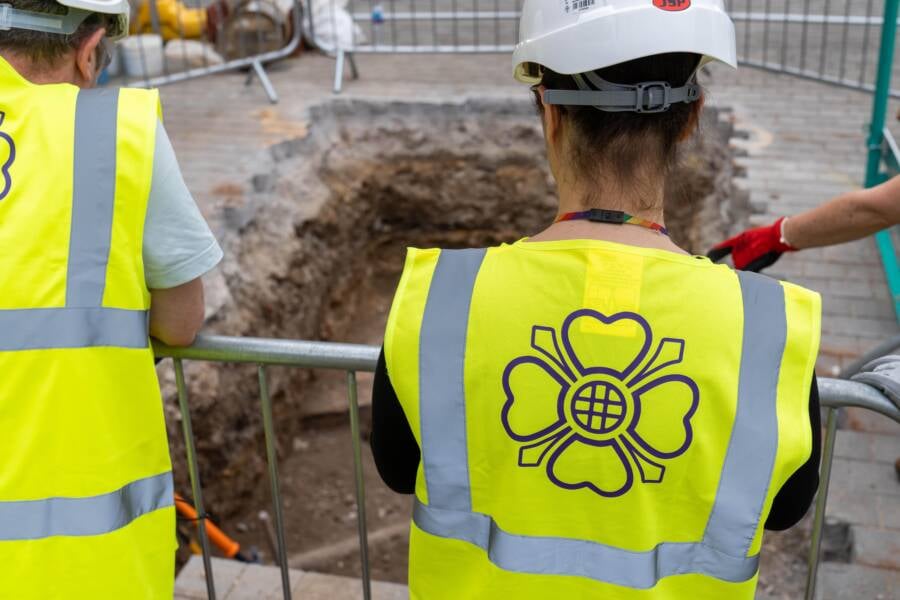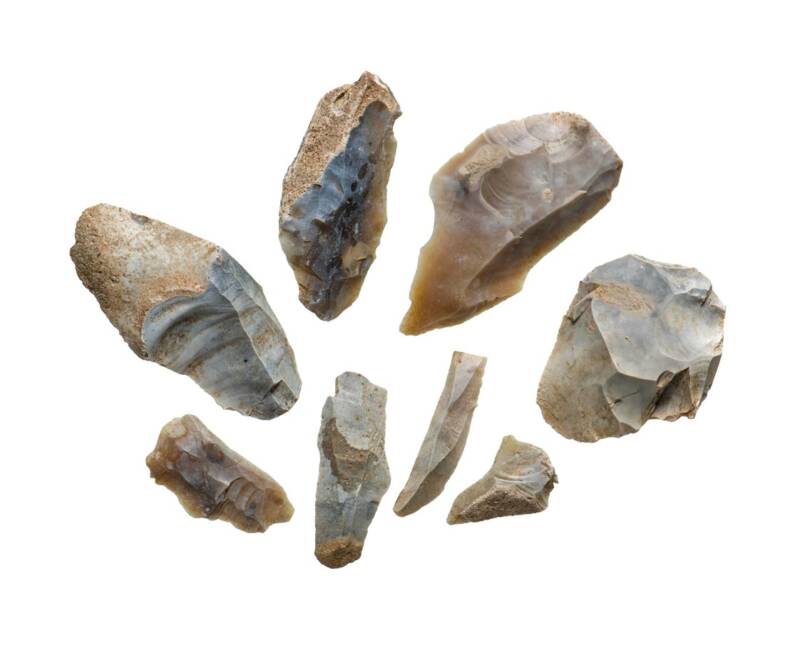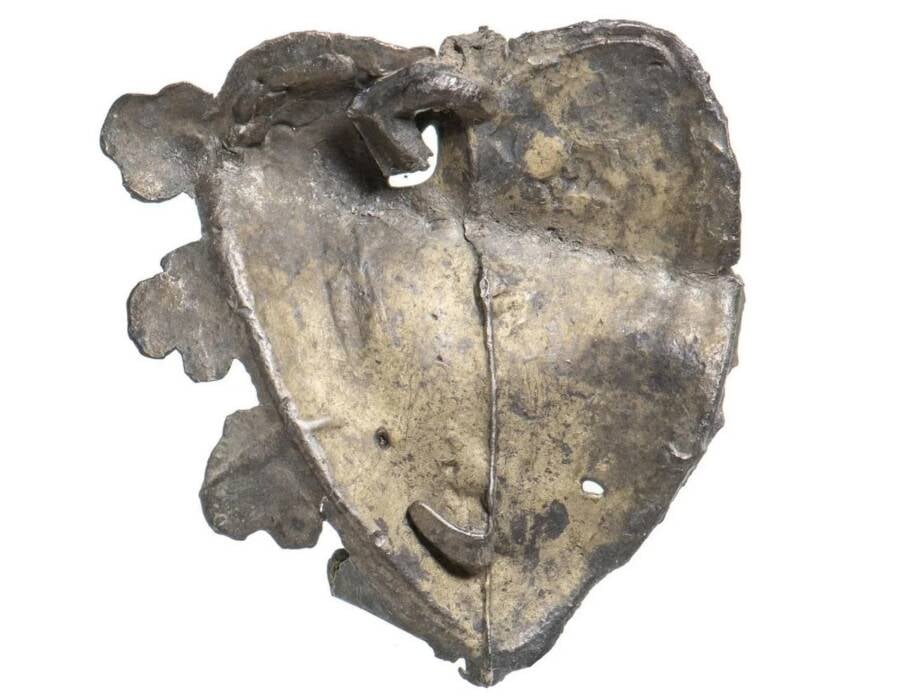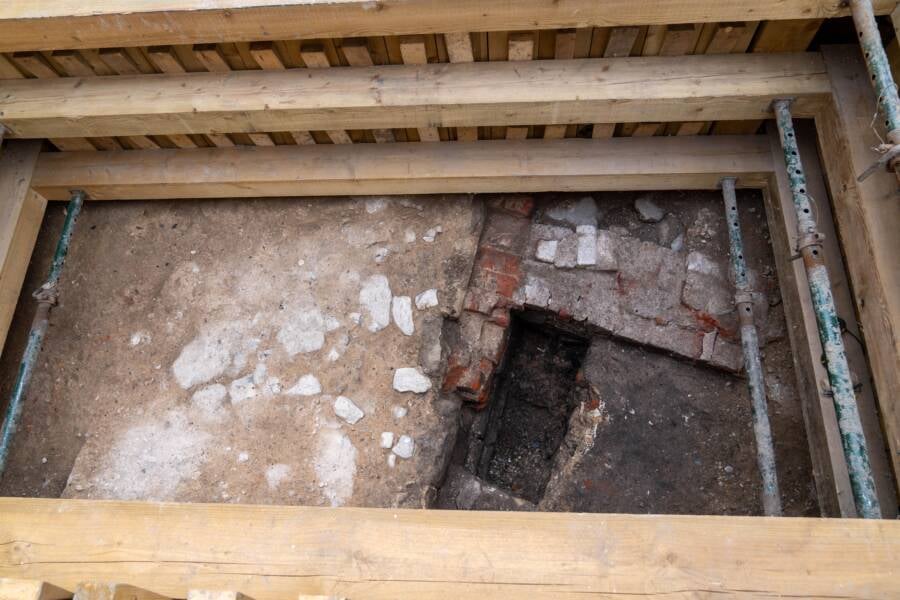Artifacts recovered from the site include prehistoric stone tools, a Roman altar, several pieces of medieval footwear, and tobacco pipes from the Victorian period.

R&R Delivery AuthorityExcavations began this year, in advance of a restoration project at the Palace of Westminster.
Archaeologists have unearthed dozens of artifacts, some dating as far back as 6,000 years, right beneath London’s Palace of Westminster. These discoveries come after an archaeological survey was launched in anticipation of restoration work at Britain’s Houses of Parliament.
The newly-uncovered relics, which span thousands of years, include everything from Stone Age tools to a heart-shaped badge from the Middle Ages to a Victorian beer jug. In perhaps the most exciting discovery, archaeologists unearthed the remains of Lesser Hall, a medieval structure that was once used as a royal dining hall. It was believed to have been destroyed in the fire of 1834, but now, like so many other pieces of English history, it has finally come to light.
The Artifacts Found Under The Palace Of Westminster, From The Stone Age To The Victorian Period

R&R Delivery AuthorityArchaeologists found approximately 60 prehistoric flint tools.
The archaeological excavations, led by Museum of London Archaeology (MOLA), have uncovered a wealth of artifacts spanning from Neolithic societies to medieval times to the Victorian era, according to a statement from the Houses of Parliament’s Restoration and Renewal Delivery Authority. Among the items were approximately 60 struck flint tools from the late Mesolithic or early Neolithic period.
These artifacts, dating back to around 4300 B.C.E., were found undisturbed in the sands below the palace. Archaeologists have theorized that the landmass along the Thames, then known as Thorney Island, was where prehistoric peoples likely fished, hunted, and gathered food.
“The history of Westminster is long, fascinating and well-documented. Discoveries such as these allow us to add to our knowledge of this ancient site,” Lord McFall of Alcluith said in the statement.
Archaeologists also found the remains of a Roman altar from 2,000 years ago. Experts think the altar was repurposed and later incorporated into the structure of the Palace of Westminster.

MOLA 2025The medieval badge made of lead that’s shaped like a flowering heart.
Also uncovered were fragments of centuries old clothing, including leather footwear and straps. Researchers also discovered an ornate lead badge in the shape of a flowering heart from the medieval period as well as a 19th-century five-pint beer jug.
A Major Medieval Discovery Underneath The Houses Of Parliament

R&R Delivery AuthorityThe remains of the medieval Lesser Hall.
The most noteworthy find from the past year of excavations was the discovery of Lesser Hall in August 2025. Lesser Hall was first built around 1167, and served as the royal dining space before being converted for parliamentary use, housing the Court of Chancery, the Court of Requests, the House of Commons, and the House of Lords over the years.
It was believed to have been destroyed during the Great Fire of 1834, which started in the furnace room in the hall’s basement. However, the new archaeological evidence suggests that not only did pieces of the hall last through the fire, but the remaining pieces also survived a nearby bombing during World War II.

R&R Delivery AuthorityThe Victorian beer jug, inscribed with the name of George Painter, tavern keeper of the historic Ship and Turtle Tavern in London’s Leadenhall area.
“The locating of the Lesser Hall walls is particularly exciting. As this work continues, we hope it will further expand our understanding of the surviving Medieval buildings, especially Westminster Hall, and that the discoveries will enrich our knowledge of this World Heritage Site,” said David Brock, Head of the Government Historic Estates Unit at Historic England. “It must also pave the way for a sensitive response to the site’s past when proposals are made for the restoration and renewal of the Palace.”
Excavations at the Palace of Westminster are ongoing. Currently, the archaeological team is excavating 14 trial pits, drilling 10 geoarchaeological boreholes, and surveying the river foreshore for artifacts.
The work will continue on through 2026, with a full report on their findings due out in 2027.
“It is vital we continue these investigations to understand what lies beneath the ground here at an early stage to inform and guide decisions on design and further surveys ahead of future enabling and construction works,” said Diane Abrams, archaeology lead at the Restoration and Renewal Delivery Authority.
After reading about the discoveries beneath the Palace of Westminster, learn about the medieval dungeon that archaeologists found underneath Leicester’s market place. Then, take a look at the 3,000-year-old Scottish weapons found in a soccer field.





